 German Reich (1942)
German Reich (1942)
SPG – 24 Built
The German self-propelled howitzers
The German Army found that their towed artillery guns had difficulty keeping up with the fast moving Panzer Divisions. Each field gun would require a six-horse team to pull the gun and limber, which was a very large box on a pair of wheels with seats on the top. The ammunition, supplies and kit would be kept in the limber. Three men would ride on the left hand horse of each pair to control them. The remaining six men of the gun crew would ride on top of the limber. Only a relative few were towed by the 3 ton half-tracks.
After the surrender of France in 1940, a lot of French Army military equipment was taken into operational use by the Germans. Some of the French tanks and armored tractors, like the Lorraine 37L, were converted into self-propelled guns. These vehicles would be able to keep up with the Panzer Divisions. There were two main types of self-propelled guns in the German Army during WW2. One was fitted with an anti-tank gun and the other with an artillery howitzer, like the 10.5cm leFH-18/40 auf Geschuetzwagen Lorraine Schlepper(f) self-propelled artillery gun. A vehicle fitted with an artillery howitzer was called a ‘Geschuetzwagen’, which is literally translated as a ‘gun vehicle’. The word ‘Schlepper’ means tractor. The letter (f) indicates that the SPG’s chassis was French.
These improvised self-propelled artillery guns could use direct fire mode at targets they could see or, more commonly, use indirect fire at targets plotted on a map. They were not designed to be in the front line or engage in combat with tanks. They were motorized artillery guns that could fire high explosive HE shells over the heads of friendly troops. Most targets would have been given to the crew as map grid references by forward observation officers or infantry units under attack. Quite often, the gun crews could not see where their shells landed, as the target was so far away. They would have to rely on the forward observer to tell them if adjustments had to be made.
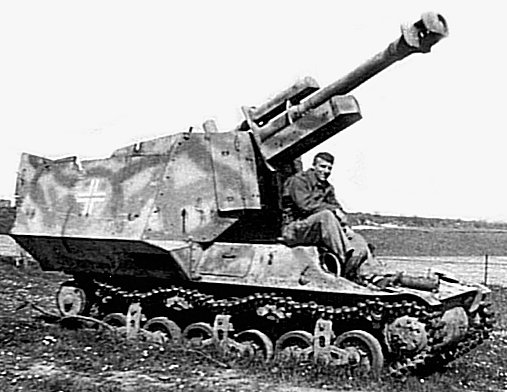
10.5cm leFH-18/40 auf Geschuetzwagen Lorraine Schlepper(f) (Alkett version)
Putting the 10.5cm leFH 18/40 field howitzer on top of the Lorraine 37L tractor was a more efficient use of manpower compared to the traditional form of German artillery battery transportation. Each vehicle only required a crew of five. Each towed field gun had a complement of nine men. The time needed to set up the 10.5cm leFH-18/40 auf Geschuetzwagen Lorraine Schlepper(f) self-propelled artillery gun when it arrived at the next firing position was a lot less than the towed artillery gun. Using the chassis of a captured French tank or tracked infantry armored supply tractor, like the Lorraine 37L, as a mount for a gun was a quicker, cheaper option than designing and building a new vehicle from scratch.
A company called Alkett, based near Berlin, converted 12 Lorraine 37L tractors into 10.5cm leFH-18/40 auf Geschuetzwagen Lorraine Schlepper(f) self-propelled artillery guns in 1942. They were a large manufacturer of armored fighting vehicles for the German Army during World War Two. German Army Major Alfred Becker worked with the company to create these conversions. The following year he was in Normandy at the head of a Baukommando, a construction command unit. Becker’s men, engineers and mechanics converted a further 12 Lorraine 37L tractors into self-propelled artillery gun by fixing 10.5cm leFH-18/40 howitzers onto the top of these vehicles and making an armored open crew compartment.
The Lorraine 37L
During WW1, the French and British Army needed a way to transport ammunition and supplies to the front line. Men and horses were getting killed and injured from small arms fire and exploding shell fragments. Tracked armored supply vehicles were developed. This vehicle was developed by the Lorraine company in 1937 as a replacement for the smaller Renault UE. It could transport a heavier load and was faster than the Renault UE. Production began in January 1939. By the time France surrendered in 1940, a total of 432 Lorraine 37L armored supply tractors had been produced.
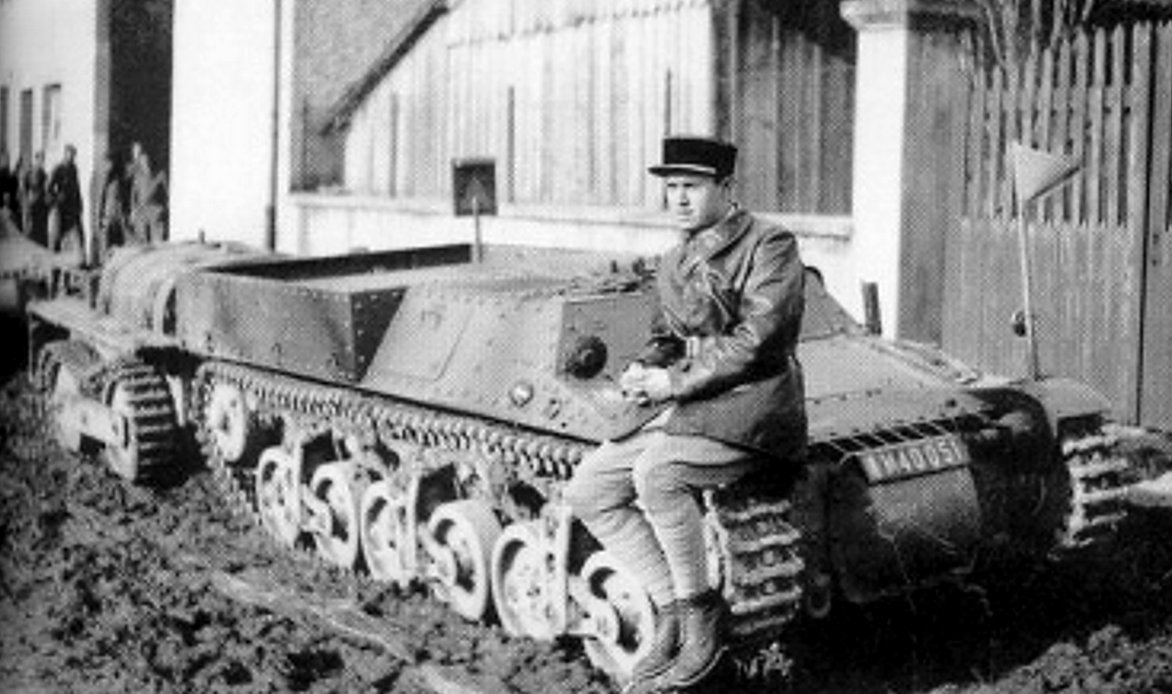
The Chenillette Lorraine 37L armored tractor unit was designed to transport ammunition and supplies to the front line.
Operational Service
On D-Day, 6th June 1944, the three battalions of the Panzer-Artillerie-Regiment 155, of the German Army 21st Panzer Division, were equipped with a total of twenty four 10.5cm leFH-18/40 auf Geschuetzwagen Lorraine Schlepper(f) and twelve 15 cm s.FH 13 Geschuetzwagen Lorraine Schlepper(f) self-propelled artillery gun conversions. Although suffering losses of tanks and assault guns, the official regimental records note that, four weeks after D-Day, none of the Lorraine conversions had been lost. That was not to last. Following the heavy fighting around Caen, the last ones were knocked out when they were caught in the Falaise Pocket and subjected to intense bombing, shelling and gun fire in August 1944.
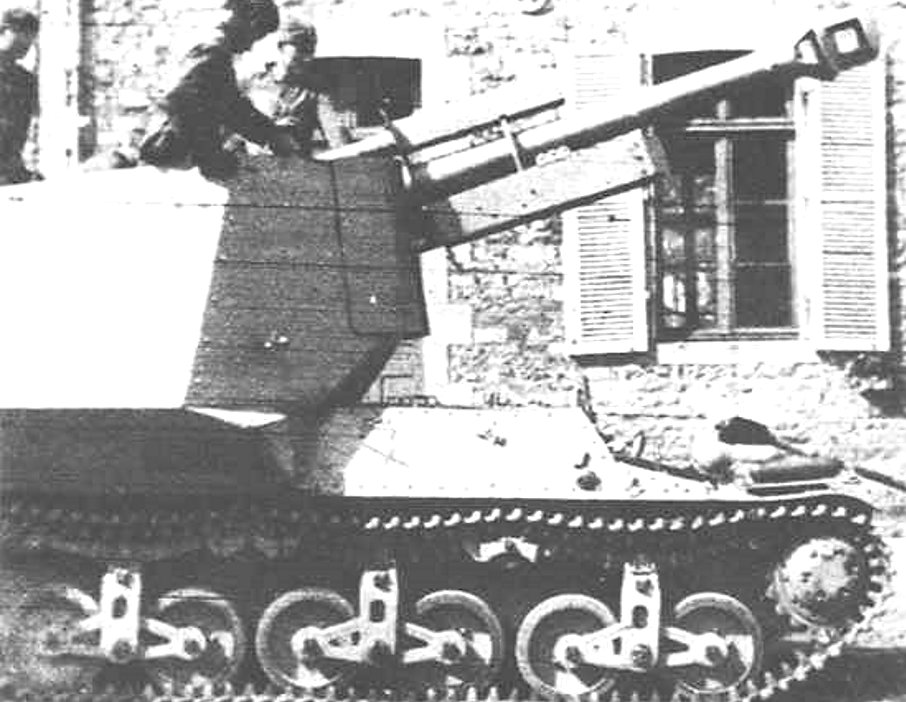
10.5cm leFH-18/40 auf Geschuetzwagen Lorraine Schlepper(f) (Alkett version)
The 10.5cm gun
The 10.5 cm leFH 18 gun was a towed howitzer used in World War II by German artillery units. The abbreviation leFH stands for the German words ‘leichte FeldHaubitze’ which, translated, means light field howitzer. It was first produced in 1935 and remained in production until 1945. To allow longer range charges to be fired and reduce the amount of recoil on the gun, a ‘Mundungbremse’ muzzle brake was fitted . This increased the operational life of the gun barrel. These field guns were designated 10.5 cm leFH 18M. Later it received further modifications, in order to reduce the total weight of the gun and make it easier to tow. The gun was bolted on to a 7.5cm PaK 40 anti-tank gun carriage. This type of gun was designated the 10.5 cm leFH 18/40.
The 105 mm (4.13 in) high explosive HE shell weighed 14.81 kg (32.7 lb). The armor piercing shell weighed 14.25 kg (31.4 lb). It had a muzzle velocity of 470 m/s (1,542 ft/s) and a maximum firing range of 10,675 m (11,675 yds). With a good gun crew, it had a rate of fire between 4-6 rounds per minute. The high explosive shell was in two pieces. It was a ‘separate loading’ or two part round. First, the projectile would be loaded and then the cartridge propellant case. The 10.5cm leichte Feld Haubitze 18/40 gun was not very useful in the direct-fire mode against enemy armored vehicles.
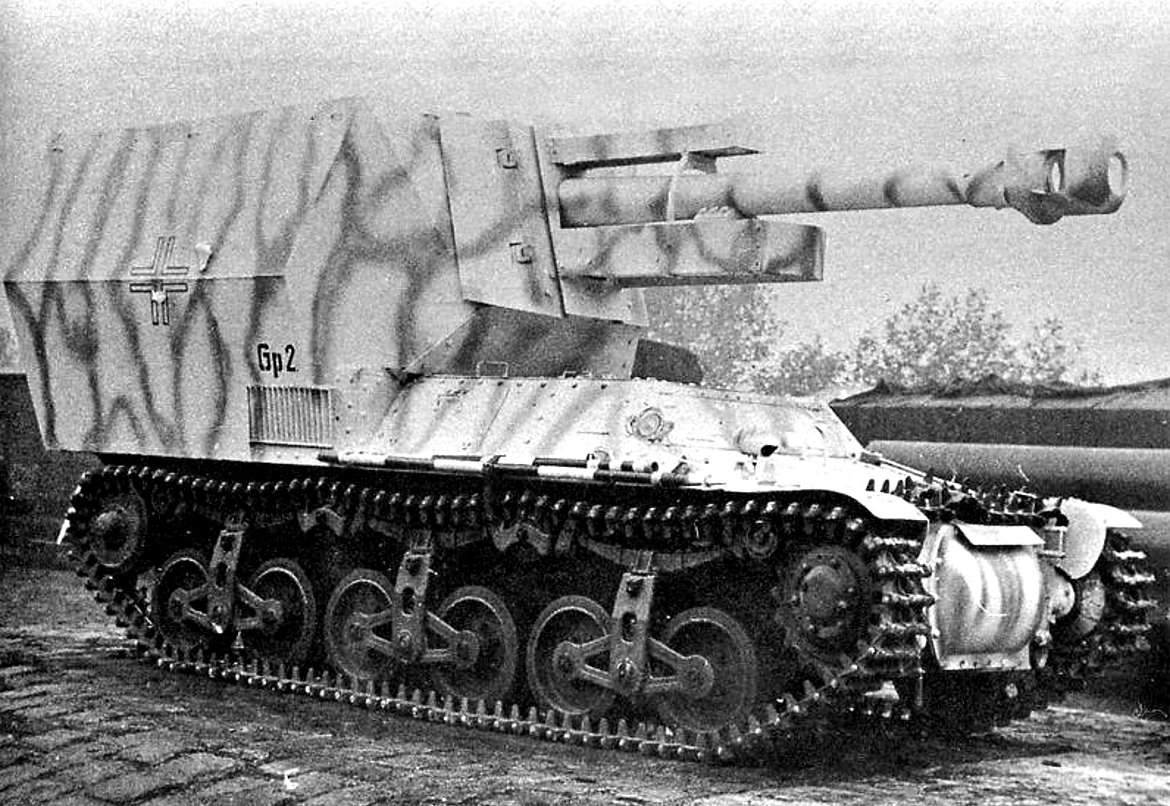
10,5cm leFH-18/40 auf Geschuetzwagen Lorraine Schlepper(f) (Baukommando Becker version).
Identification
One of the easiest ways of telling the difference between an early 1942 built Alkett 10.5cm leFH-18/40 auf Geschuetzwagen Lorraine Schlepper(f) and one built later by Baukommando Becker is to look at the horizontal angle joint on the side armor of the crew compartment. It was far lower on the earlier Alkett version.
21st Panzer Division June 1944
Panzer-Artillerie-Regiment 155
I. Abteilung (1st Battalion)
1st Battery 4x 12,2-cm-Kanone 390/1(r) (captured Russian)
2nd Battery 4x 12,2-cm-Kanone 390/1(r) (captured Russian)
3rd Battery 4x 10 cm K 18’s
II. Abteilung (sf) (2nd Battalion)
4th Battery 6x 10.5 cm le.FH 18 auf Lorraine
5th Battery 6x 10.5 cm le.FH 18 auf Lorraine
6th Battery 6x 15 cm s.FH 13 auf Lorraine
III. Abteilung (sf) (3rd Battalion)
7th Battery 6x 10.5 cm le.FH 18 auf Lorraine
8th Battery 6x 10.5 cm le.FH 18 auf Lorraine
9th Battery 6x 15 cm s.FH 13 auf Lorraine
Rocket Battalion (Werfer)
10. Batterie (10th Battery)
2x S307(f) R-Vielfachwerfer
An article by Craig Moore
Specifications |
|
| Dimensions (L,W,H) | 4.22m (without gun) x 1.57m x 2m (13’10” x 5’2″ x 6’7″ ft.in) |
| Total weight, battle ready | 7.7 tons |
| Crew | 4 (commander, driver, gunner, loader) |
| Propulsion | Type 135 Delahaye 6 cylinder inline petrol engine, 70 hp at 2800 rpm |
| Fuel capacity | 144 litres |
| Top speed | 35 km/h (22 mph) |
| Operational range (road) | 137 km (85 miles) |
| Armament | 105 mm (4.13 in) leFH 18 howitzer with 20 rounds |
| Armor (chassis) | Front 9 mm (0.35 in), cast nose 12 mm (0.47 in), sides 9 mm(0.35 in), rear 9 mm(0.35 in) |
| Total production | 24 |
Sources
Profile AFV Weapons 55 German Self-Propelled Weapons by Peter Chamberlain and H.L.Doyle
Beute-Kraftfahrzeuge und panzer der deutschen Wehrmacht by Walter J. Spielberger
Normandy 1944: German military organization, combat power and effectiveness by Niklas Zetterling
Panzers in Normandy then and now by Eric Lefevre
French Tank Museum Saumur Musée des Blindés
www.tank-hunter.com
-Alkett.png)
10.5cm leFH-18/40 auf Geschuetzwagen Lorraine Schlepper(f) (Alkett Version) in sand livery. 155th Panzer Artillery Regiment, 21st Panzer Division, Normandy, summer 1944.
.png)
10.5cm leFH-18/40 auf Geschuetzwagen Lorraine Schlepper(f) (Alkett Version) in sand green and brown livery. 155th Panzer Artillery Regiment, 21st Panzer Division, Normandy, summer 1944.
-late-grey.png)
10.5cm leFH-18/40 auf Geschuetzwagen Lorraine Schlepper(f) (Baukommando Becker version) in grey livery. 155th Panzer Artillery Regiment, 21st Panzer Division, Normandy, summer 1944.
-Baustokommando-Becker.png)
10.5cm leFH-18/40 auf Geschuetzwagen Lorraine Schlepper(f) (Baukommando Becker version) in sand livery. 155th Panzer Artillery Regiment, 21st Panzer Division, Normandy, summer 1944.
-late.png)
10.5cm leFH-18/40 auf Geschuetzwagen Lorraine Schlepper(f) (Baukommando Becker version) in sand and brown livery. 155th Panzer Artillery Regiment, 21st Panzer Division, Normandy, summer 1944.
Operational Photographs
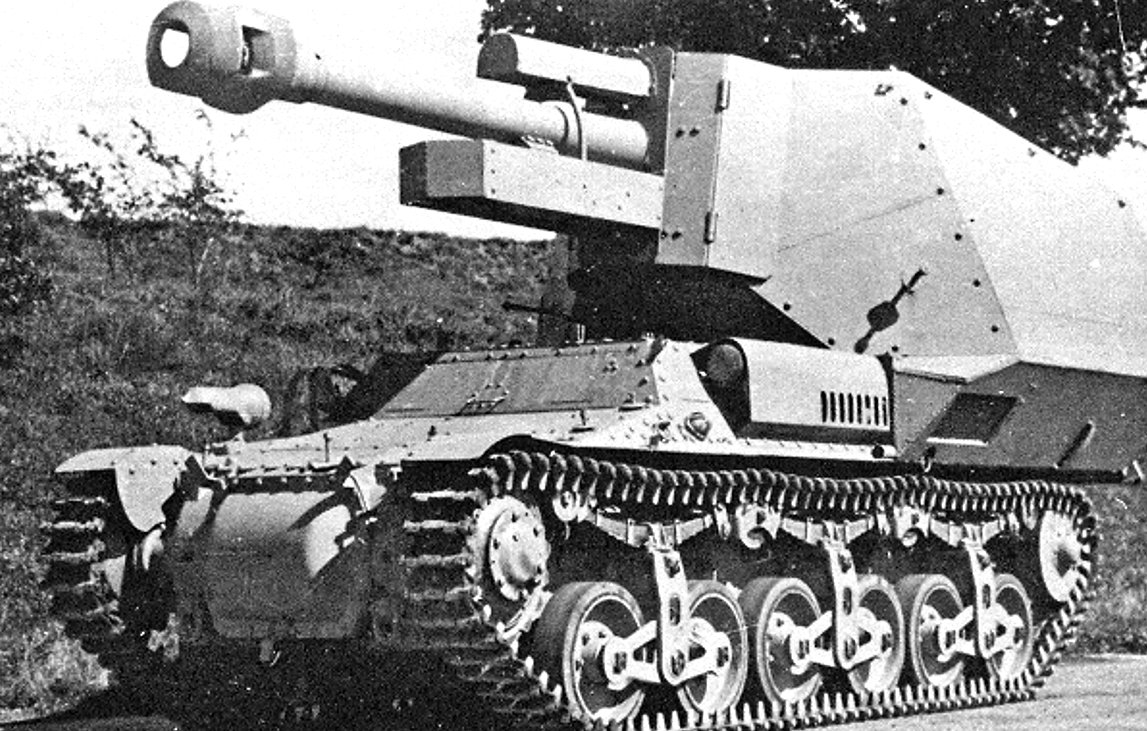
10.5cm leFH-18/40 auf Geschuetzwagen Lorraine Schlepper(f) (Alkett version)
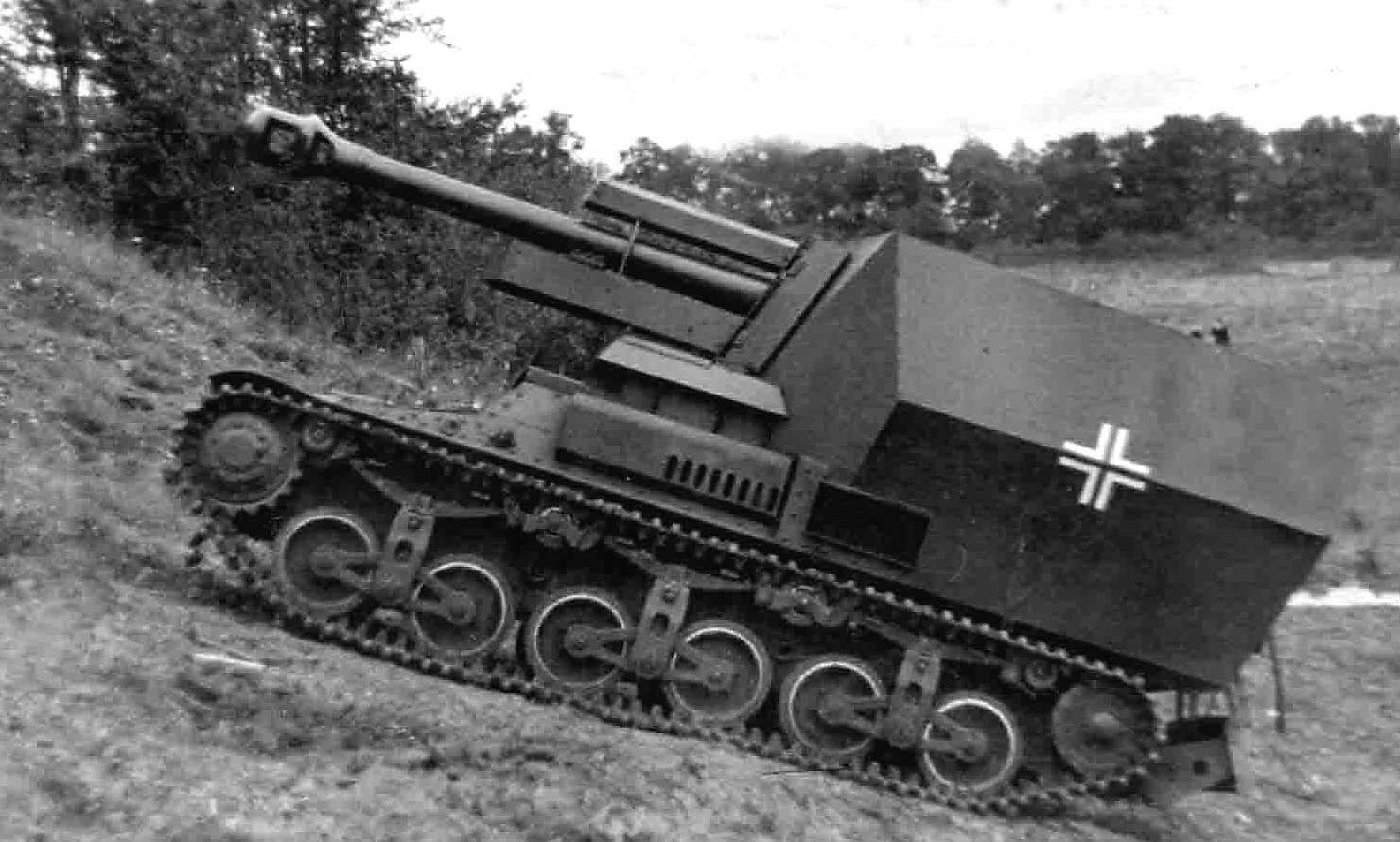
10.5cm leFH-18/40 auf Geschuetzwagen Lorraine Schlepper(f) (Baukommando Becker version)
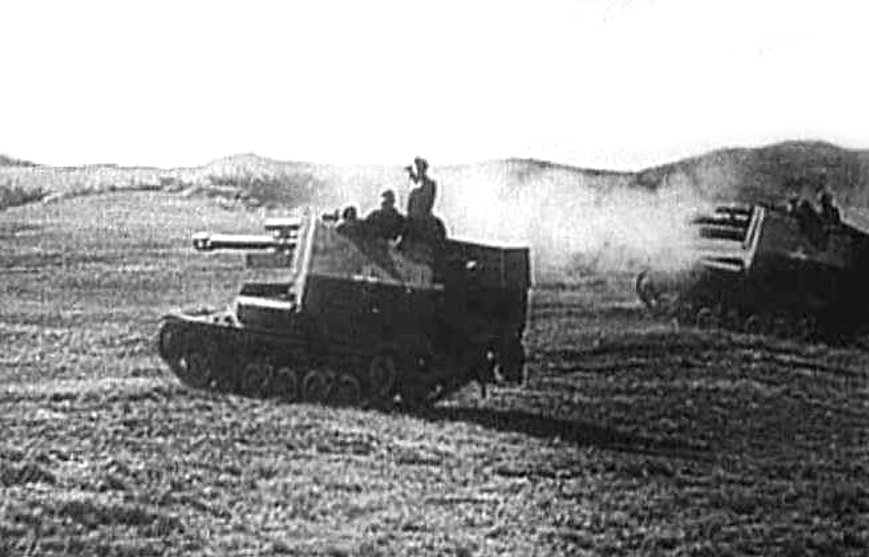
10.5cm leFH-18/40 auf Geschuetzwagen Lorraine Schlepper(f) (Baukommando Becker version)
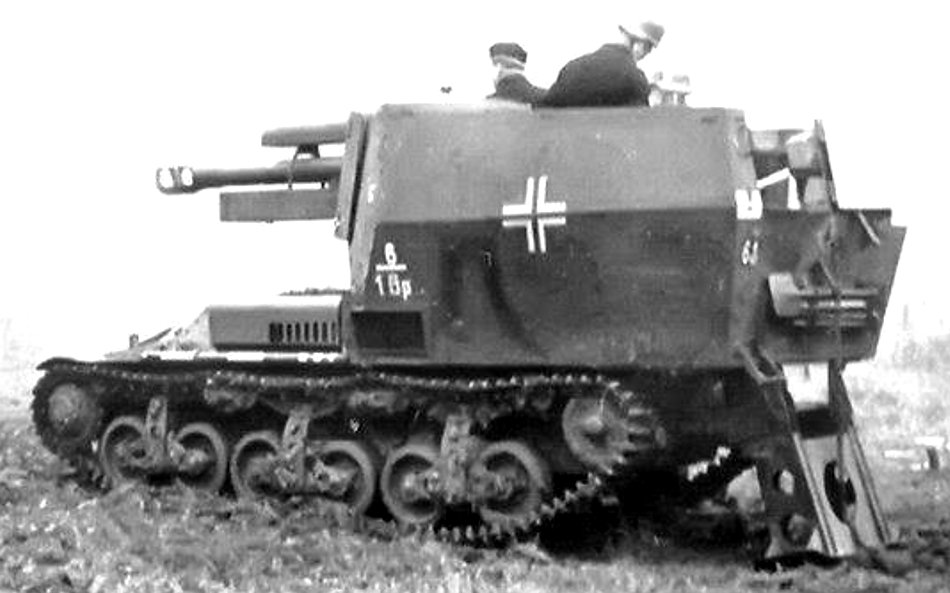
10.5cm leFH-18/40 auf Geschuetzwagen Lorraine Schlepper(f) with the rear hatch open. (Baukommando Becker version)
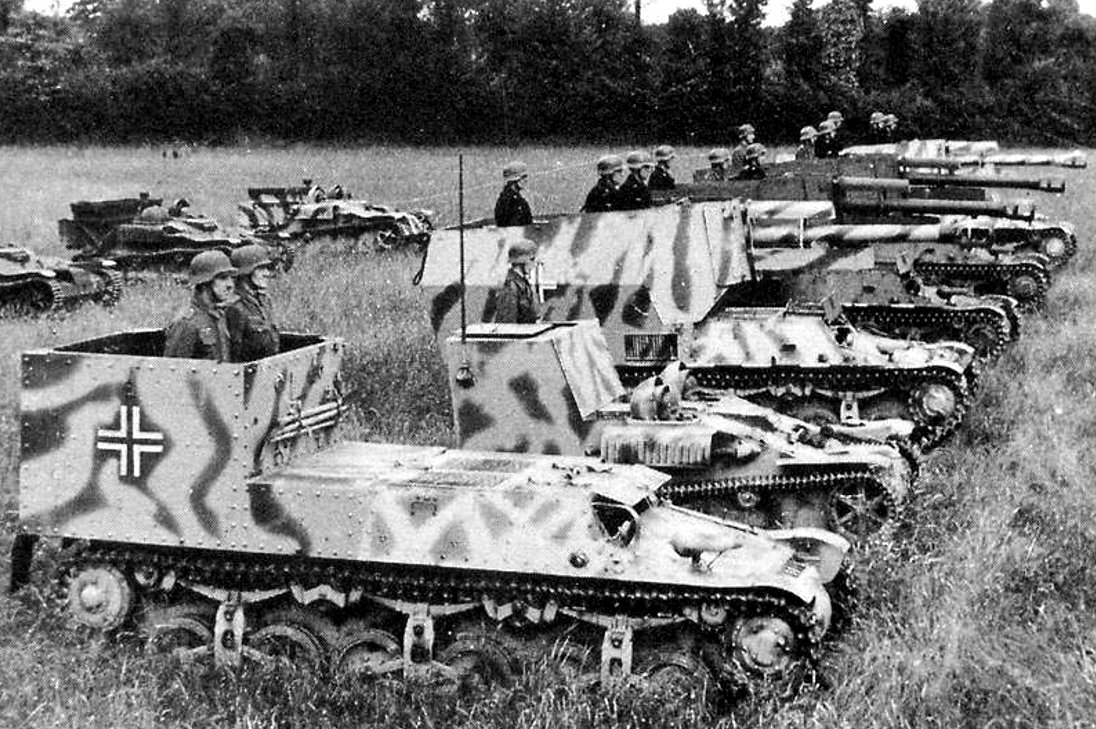
Four 155th Panzer Artillery Regiment, 21st Panzer Division 10.5cm leFH-18/40 auf Geschuetzwagen Lorraine Schlepper(f) SPGs on parade in France 1944. There are three Renault UE chenillette tracked infantry supply tractors behind them. The vehicle at the front of the photograph is a Lorraine VBCP-38L (Voiture blindee de Chasseurs Portes), an armored personal carrier modified to be an improvised artillery observation vehicle. The second vehicle is a ‘Kleiner Funk-und Beobachtungspanzer auf Infanterie-Schlepper UE(f)’ a small radio and observation vehicle based on an armored Renault UE chenillette chassis. (Baukommando Becker converted 40 Renault UEs to this specification. They replaced the rear ammunition and supplies transportation box with a lightly armoured structure for observation and radio equipment). The larger vehicle would have been the Battery Officer’s command vehicle and the smaller one would have been used as an observation post vehicle. being small it would be fairly easy to conceal. Information by Marcus Hock and Steven Osfield
Surviving Examples
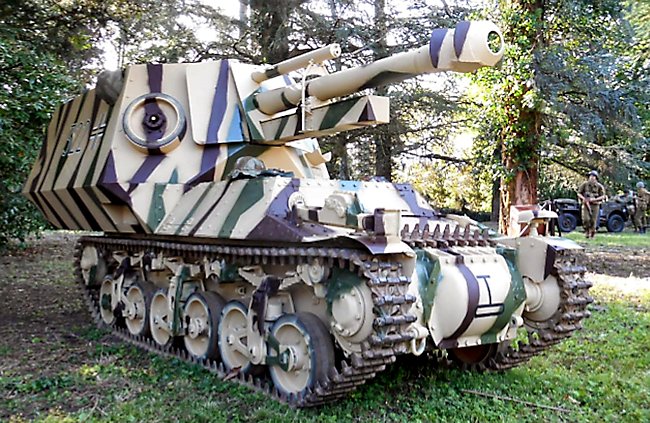
10,5cm leFH-18/40 auf Geschuetzwagen Lorraine Schlepper(f) built on an original Lorraine 37L tractor chassis. It has the original 1942 Delahaye 103TT engine. It is owned by Lorraine François Couderc. It is in a running condition and can be seen at military vehicle events in France. The armoured crew compartment has been constructed to the early Alkett design.
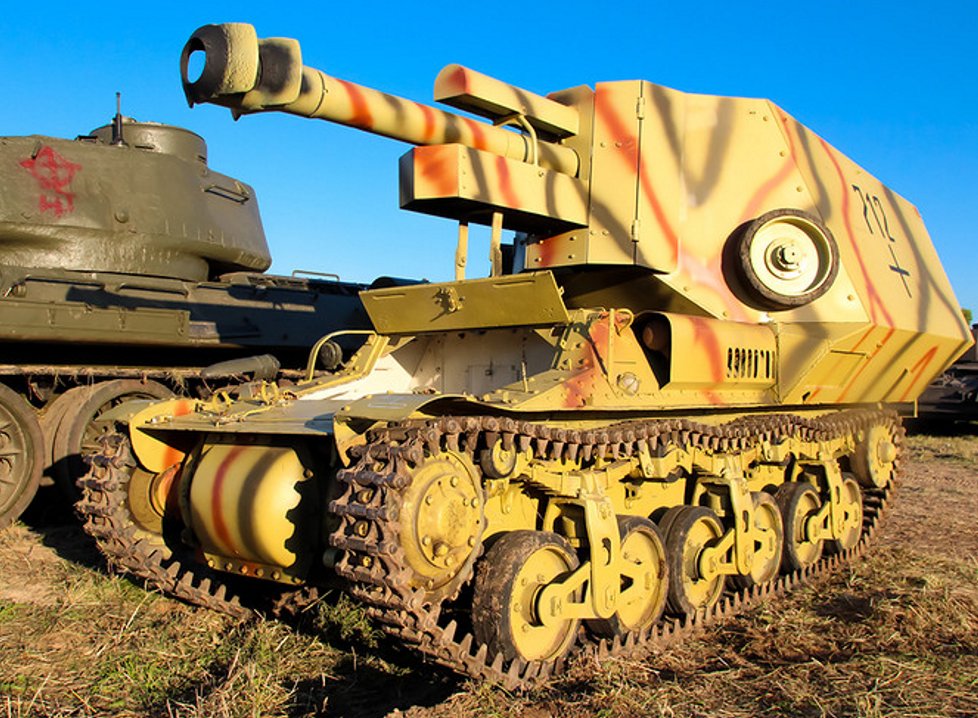
This 10,5cm leFH-18/40 auf Geschuetzwagen Lorraine Schlepper(f) was rescued from a scrapyard in Turn, France. It has been restored using an original gun to match the specifications of the earlier produced Alkett version. As you can see from the video below it is in a running condition. It is kept at the Central Museum of the Great Patriotic War 1941 – 1945, Park Pobedy, Moscow, Russia.

Germans Tanks of ww2
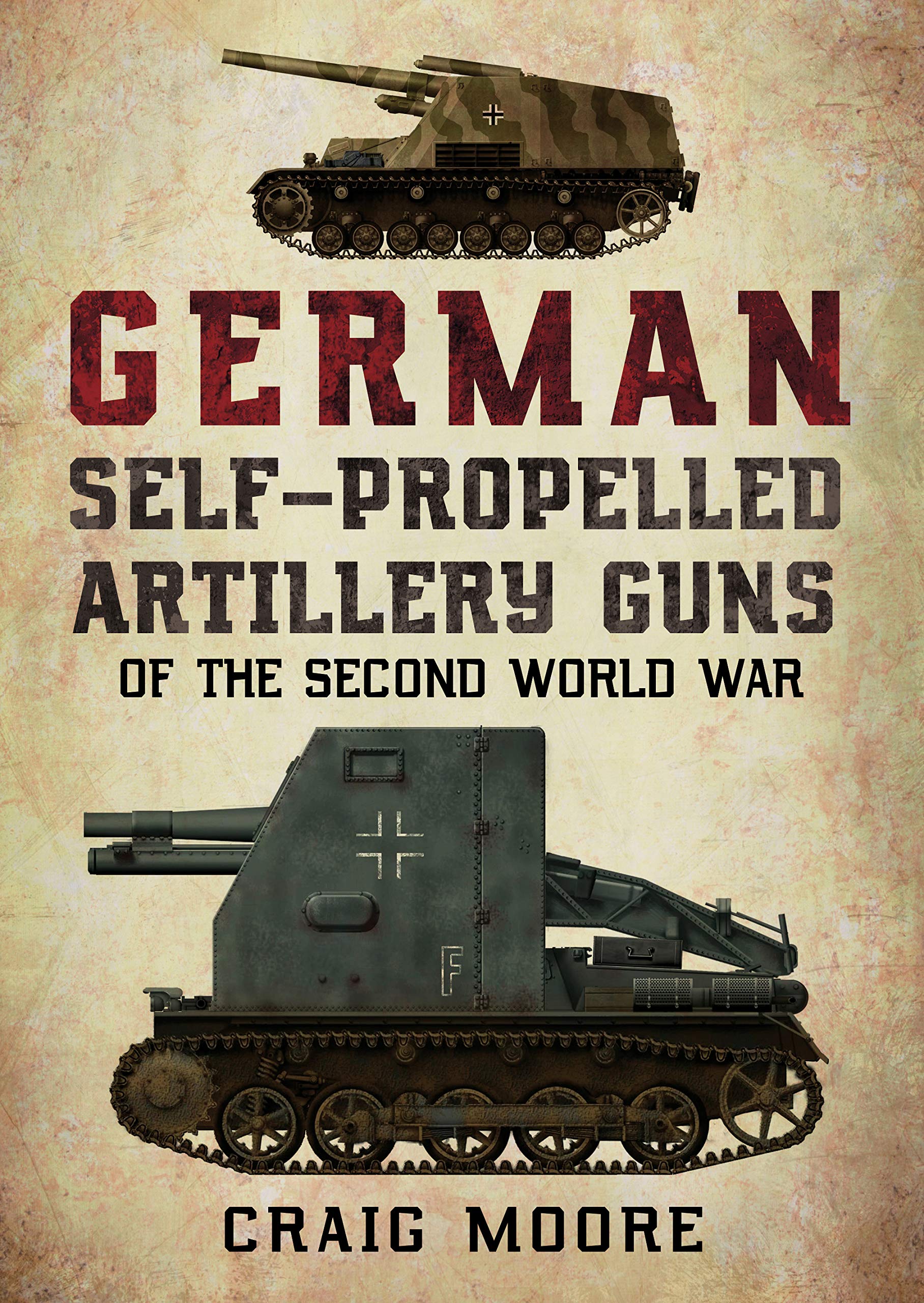
German Self-Propelled Artillery Guns of the Second World War
By Craig Moore
One towed artillery gun required a team of six horses and nine men. WW2 German engineers came up with the idea of mounting an artillery gun on top of a tank chassis. This new technology reduced the amount of resources required to deploy one artillery gun. Artillery self-propelled guns only needed a four or five man crew. They could also be made ready to fire more quickly. This book covers the development and use of this new weapon between 1939 and 1945. One type was successfully used in the invasion of France in May 1940. More were used on the Eastern Front against Soviet forces from 1941 until the end of the war in 1945.

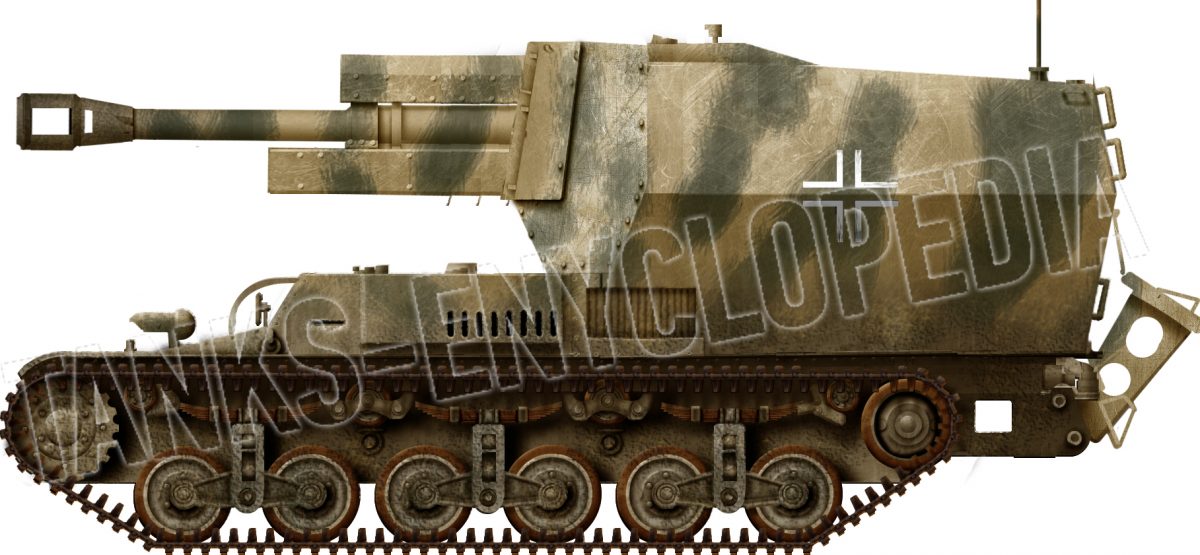
One reply on “10.5 cm leFH 18/40 auf Geschützwagen Lorraine Schlepper(f)”
Better pictures of The Lorraine 37L
http://auctionsamerica.com/events/feature-lots.cfm?SaleCode=MM12&ID=r1027&Order=price&feature=&collection=&grouping=&category=